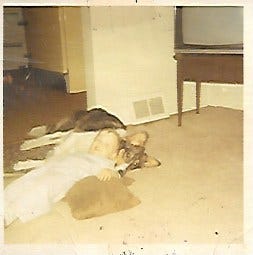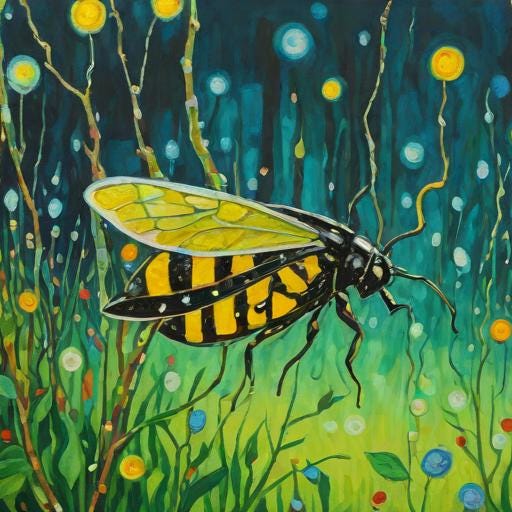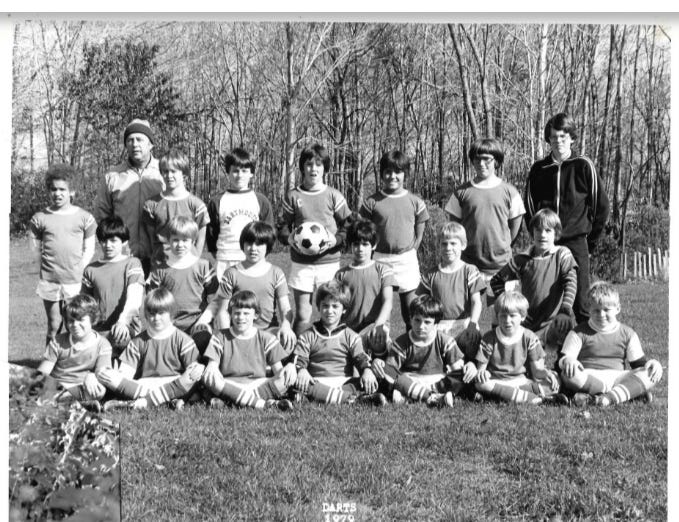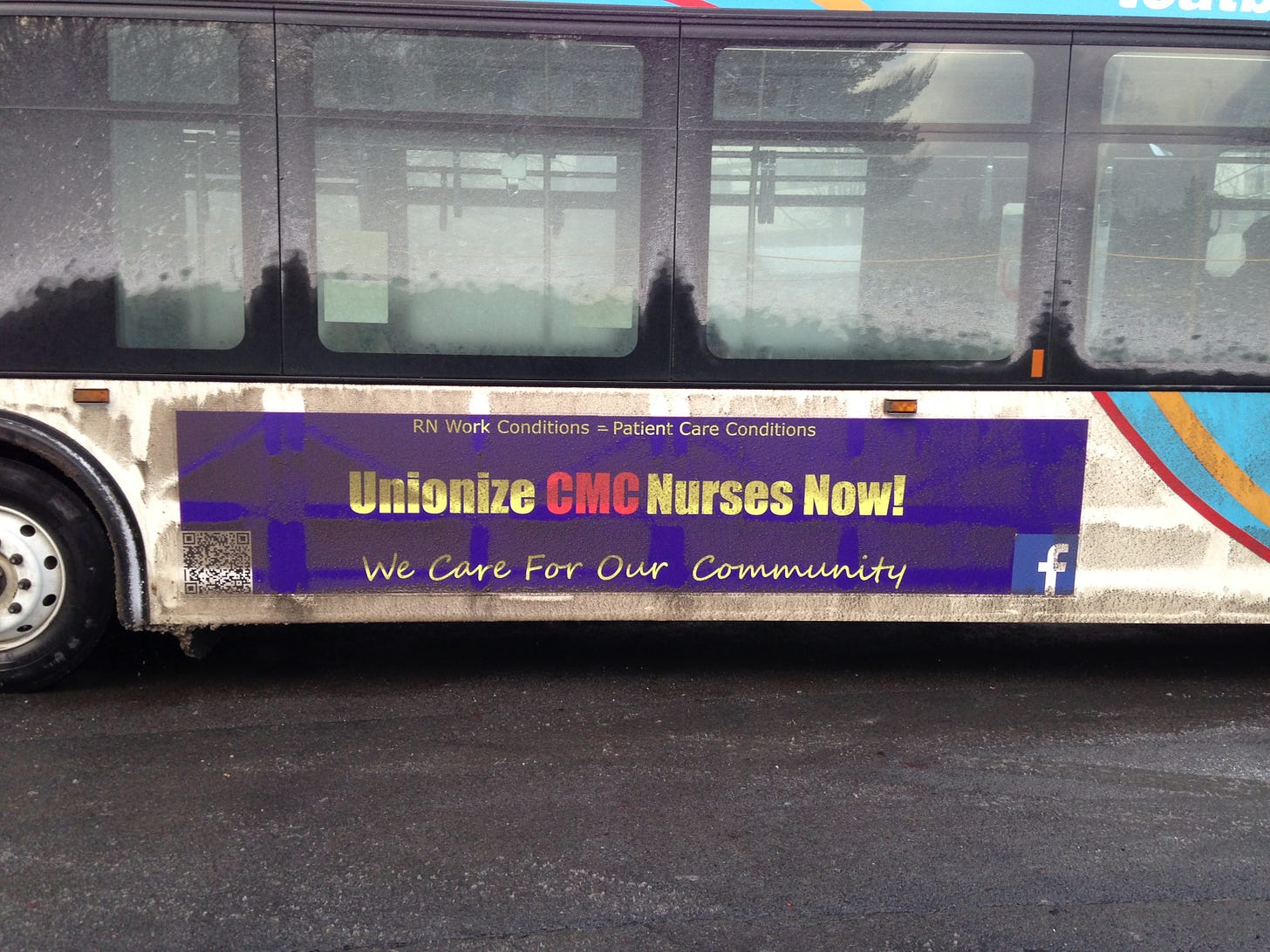
Beyond fear – by Scott Marsland, FNP-C
[ad_1]
History
1973 was a big year for me. I turned four, my family moved to a new home in another state, and I learned about yellow jackets and rats.
There was a woodpile in our backyard. Curious boy that I was, I noticed that insects were flying in and out of it, thin creatures with yellow and black bodies. I could see that there was one opening in particular where they landed, entered, re-emerged and flew off again. I later learned that these were yellow jackets. In a way which would play out over and over again in my life, until I got wise and recognized my own folly, I picked up a stick and poked it in the hole, then ran off. The buzz it stirred up was very exciting. So exciting in fact, that I did it again. It was the third time that went sideways. I didn’t just poke the stick in the hole, I gave it a few good wiggles and wags.
Boy howdy! A storm of angry insects came swarming out of their nest in search of a target. In my screaming, flailing dash between the woodpile and the enclosed porch of our house, I was stung twenty six times. It took my mom and dad a puzzled minute to figure out what all the hooting and hollering was about in our backyard. They rushed me inside and grabbed rolled up newspapers to wack away at the angry ones which had followed us into the breezeway. To this day, I’m not sure if either of them was stung, although I’m sure that I’ll hear from my mother after this post. Later on as I lay dozing in a hospital room with dim lights, it was beyond doubt that my mom and dad were on my side in that moment of crisis. In spite of the fact that I had seriously blundered and brought down a world of hurt upon all of us.
Around the same time, I also learned about rats. We had a beautiful collie named Dutchess. Protective lassie she was, and one day while I was outside playing in the backyard, she cornered a rat on the patio. As I approached, I could see her lunging and biting at a dark furry animal with a long tail. Dutchess wounded the rat, and my dad finished it off with a shovel, but for her troubles, Dutchess suffered a nice bite to the snout. I rode in the backseat with her as we took her to the vet, smearing blood from her nose all over the window. Such excitement!
Since that time, I have never again bothered a yellow jacket that didn’t bother me first. Knock on wood, I haven’t had to tussle with any rats either. But indeed, I learned that the smallest of beings were not to be trifled with, as each has its own dignity and defenses.
Recent past
Shifts worked at SUNY Upstate between the start of the pandemic in March 2020 and my departure in August 2021 have become a blur in my memory. The gestalt is fear of dying while providing care amidst organized chaos. It is hard to think when you are scared. I’m grateful that I was a seasoned Emergency nurse going into the pandemic. Ditto being in my late forties with some living under my belt. Still, I think that we were all scared, and it came out in different ways.
At the time I was the union steward in our Emergency Department (ED), and an elected representative to the Executive Board of the Public Employee Federation or PEF. It had been a decade since there was a functioning steward in the ED. Although our team was filled with independent thinkers and sturdy characters, it wasn’t operating as an empowered and organized group vis-a-vis our own rights and safety.
I believe it was Machiavelli who formulated the maxim “Never let a good crisis go to waste”, but I’ll credit modern human resource management with taking this to new heights. As the uncertainty of global viral illness swirled around us, Upstate did one thing it does well, and often. It disappeared several workers faster than an Argentinian dictatorship. One in particular was a dear Nursing Assistant or HCT who was the old grey mare being put out to pasture. Another was an Assistant VP of our sister union, CSEA.
Can I just say that working a twelve hour shift in a busy Level 1 Trauma Center is not an easy feat? And that it is harder when you aren’t sure if you’re going to die after you help intubate that thirty year old who just rolled in with EMS? Even harder when stalwart co-workers disappear and you’re not supposed to talk about it? Even harder when you have a family to support and bills to pay, and who doesn’t? Harder still when you’re the union steward trying to inspire co-workers to stand up for each other?
It was a gift of the universe that in 2018 I met Ellen David Friedman, a force of nature who has been a union organizer for nearly fifty years, and who just happened to have relocated from Vermont to my home town of Ithaca. One of the many things she taught me was to lean into my fear and act, but more importantly, to not act alone. This may be a lesson which many of us need to learn over and over. We look to others, individual leaders, to help us out of the mess we are in, instead of looking to each other. This takes immeasurable patience, and focus, as we hold back our bright ideas. We fight our urge to save people, and listen to each other to determine the steps which we can take as a group. We then shoulder the risk, and the fear, together.
Present
Before we ever met, Dr Pierre Kory introduced me to a concept which helped me survive the beginning of the pandemic in a busy ED. It was the four Ds: density, duration, draft and dimension. This is a risk assessment perspective that will help diminish your fear and empower you to negotiate a Covidian world.
Density: how many people are in the space?
Duration: for how long?
Draft: with what degree and quality of air circulation?
Dimension: in what size space?
These concepts take on greater significance when we expand our concern beyond simply being infected by Covid, and consider the dynamics of shedding.
What is shedding? From a 2015 FDA Guidance document: “The release of viral or bacterial gene therapy products from the patient by any or all of the following routes: feces (feces); secretions (urine, saliva, nasopharyngeal fluids, etc.); or through the skin (pustules, lesions, sores).” The products (i.e. spike protein) are known to be shed via either the synthetic lipid covered nanoparticles or via enclosure within endogenous nanoparticle sized “exosomes” from a vaccinated/boosted person, to another, regardless of their vaccination status. Our impression is that aerosolized particles conveyed via exhalation and inhalation are the primary route of transmission. Dr Kory’s Substack series on the topic provides insight into the scientific basis of shedding as an observed adverse effect of the mRNA vaccines.
Many of us have been acting on the principles of the four Ds since the start of the pandemic. Grocery shopping early, going to the car lane at the bank, meeting outside with friends. Employing the words, the Ds, and gauging the risk can make it more tangible. It can also form the basis of negotiating our interaction with others.
Sharing a car ride with another person is a very intimate exposure. There may only be two people in the vehicle, but the space is very small. If it the outside temperature is hot, or cold, the ventilation in the car may be set to recirculate the same air. The longer the ride, the more the exposure.
In a recent visit my patient had a relapse in brain fog and cognitive impairment, to such a degree that the part-time work to which he had just returned was proving very difficult. What we identified as the likely cause was secondary shedding. In the last week his mother had spent several hours in a car with her sister-in-law, who had just been boosted. Two people, two hours, recirculating air, small space.
Car rides have been an instigating event for many of my patients over the last two years. Whether it was a daily commute (an hour each way with someone who was several times boosted), or sightseeing with visiting family (hot weather, recirculating AC), or brief rides with a child’s boosted boyfriend sitting behind the patient/driver. It makes sense to have the skinny on who is sharing your ride.
What about being outside? Evaluated through the rubric of the four Ds, this is a very, very low risk scenario. Two people outside is a non-issue. As long as you like. A breeze and movement are your friends. The sky is literally the limit. Introducing a crowd of people shoulder-to-shoulder, under a tarp or overhead structure which inhibits air flow, begins to change the dynamics. But still, this is a lower risk scenario.
How about restaurants? It depends. What time of day? Late lunch hour is going to draw fewer people than noon, or dinner at six. Is it a cozy little bistro where you can smell whether or not your neighbor applied enough deodorant, or an updated restaurant with multiple air exchanges per hour? My wife and I ventured a meal at our favorite restaurant months ago, in which we were at a two-top elbows away from couples on either side. High density, long duration (French, three hours from start to finish), good ventilation, high ceilings and modest size. But there can always be a wild card. We struck up a long conversation with the couple next to us. At the very end we learned that each of them had both shots and every booster available. We were talking and laughing in close proximity for well over an hour. The headaches, body aches, and fatigue to follow that night and the next day were not mysterious.
Airports and airplanes are at two different ends of the four Ds spectrum. Airport lounges and lines can be densely packed, we can wait for hours, but the movement of people, good air circulation and vast dimensions tend to limit the risks. Airplanes are much more confined spaces, in which we sit rubbing elbows, again for hours, with recirculating air.
Gyms have their own peculiar dynamics. Skip the crowd. Workouts are often an hour from start to finish. A space with an open floor plan and high ceilings quite literally gives you some breathing room. Then there is mat work such as yoga and stretching in smaller spaces, where the density of aerosolized particles accumulates in the lowest inches and feet of the room. It is not uncommon for the exhaled breath from other people exercising to linger in the air for up to 2 1/2 hours, and concentrate near the floor.
Through detailed discussion with one patient, we determined that not only were his post-acute sequelae of Covid (PASC) exacerbations related to days he went to the gym and did mat work, but also his daughter’s increased symptoms (secondary shedding). It’s worth rethinking the timing and format of your routine. For the geeks in the room, this 2022 study on aerosol dispersion in a ventilated room will give you reason to pause.
Here come the Holidays and the attendant travel and convivial gatherings which give so much meaning to our lives. Use the four Ds to help you think about harm reduction. How many people to invite, how long to visit, how to improve the air flow, and how big a space is feasible? If you can’t open windows or turn up the ventilation, consider a HEPA filter in place. We use an Oransi in the waiting area of our clinic space. You may be able to fear less, and think more.
One thing I have come to appreciate through my work in the clinical arena of spikopathy is that I am not alone in fighting the spike protein. Our practice the Leading Edge Clinic is not alone. In learning how to protect against and repair harms of the virus and Covid shots, we continue to build connections with our patients, other practitioners and researchers. We are learning from each other. Stay safe out there, meaning, look out for yourself and each other in practical ways. Remember that you are not alone.
P.S. Any recommendation I make for products such as Oransi HEPA filters are free from financial interest on my part.
P.P.S. I am honored to be speaking at the third FLCCC Educational Conference, ‘Healthcare Revolution: Restoring the Doctor-Patient Relationship’, taking place February 2-4, 2024 in Phoenix, AZ! I’m looking forward to connecting with you there. You can learn more about the conference here: flccc.net/conference (http://flccc.net/conference)
Hashtags:
#HealthcareRevolution #FLCCCConference #F
LCCC2024 #FLCCC #FLCCCAlliance
[ad_2]
Source link







